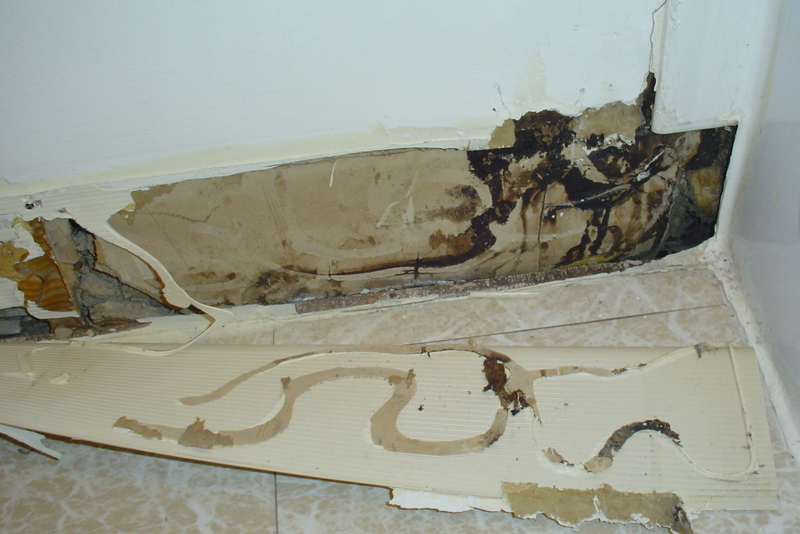First step is a Moisture Test

In some cases, indoor mould growth may not be obvious. It is possible that mould may be growing on hidden surfaces, such as:
- The back side of dry wall
- Wallpaper
- Panelling
- The top of ceiling tiles
- The underside of carpets and pads
Possible locations of hidden mould can include:
- Pipe chases and utility tunnels (with leaking or condensing pipes)
- Walls behind furniture (where condensation forms)
- Condensate drain pans inside air handling units
- Porous thermal or acoustic liners inside duct-work
- Roof materials above ceiling tiles (due to roof leaks or insufficient insulation)
- Moisture Test
Some building materials, such as dry wall with vinyl wallpaper over it or wood panelling, may act as vapour barriers, trapping moisture underneath their surfaces and thereby providing a moist environment where mould can grow. Perform a moisture test. You may suspect hidden mould if a building smells mouldy, but you cannot see the source, or if you know there has been water damage and building occupants are reporting health problems. Investigating hidden mould and fungus problems may be difficult and will require caution when the investigation involves disturbing potential sites of mould growth—make sure to use personal protective equipment. For example, removal of wallpaper can lead to a massive release of spores from mould growing on the underside of the paper. If you believe that you may have a hidden mould problem, you may want to consider hiring an experienced professional and have the do a moisture test. If you discover hidden mould or fungus, you should revise your remediation plan to account for the total area affected by mould or fungus growth.
